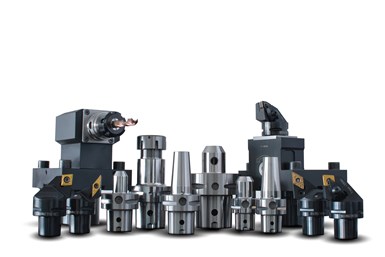Lyndex-Nikken Toolholders Offer Stable, Versatile Machining
Polygonal shank toolholders provide a rigid connection between the tool and machine — ideal for all processes both in turning and milling.
Share


Lyndex-Nikken, manufacturer and provider of high-performance machine tool accessories, offers polygonal shank toolholders for increased stability and versatility in machining. Polygonal shank toolholders have a standardized interface as per ISO 26623, enabling optimal stability and a rigid connection between the tool and machine — ideal for all processes both in turning and milling.
As precisely defined per ISO 26623, the polygon shank coupling (PSC) interface features a unique tapered polygon which serves as a main element in torque transmitting, centering and clamping. With double contact on both face and taper, as well as great cross-sectional strength, this interface is unrivaled in terms of high clamping force and bending stiffness.
According to the company, the combination of these properties gives the PSC interface an advantage over HSK and 7/24 tapers with about 2X better bending and torsional characteristics, which translates into greater process stability, higher productivity and lower costs.
Used in both standard turning centers and hybrid mill-turn machines, PSC turning toolholders enable a fast tool change solution for reduced downtime and increased productivity without compromising stability and rigidity. Additionally, direct high pressure coolant nozzles increase tool life with higher feeds and speeds. This enables more time making chips and less time in unwanted stops.
Lyndex-Nikken’s polygonal shank toolholders are available in five sizes with flange diameters of 32, 40, 50, 63 and 80 mm (sizes C3, C4, C5, C6 and C8).
Related Content
-
Medical Shop Performs Lights-Out Production in Five-Axes
Moving to five-axis machining enabled this shop to dramatically reduce setup time and increase lights-out capacity, but success relied on the right combination of workholding and automation.
-
Chuck Jaws Achieve 77% Weight Reduction Through 3D Printing
Alpha Precision Group (APG) has developed an innovative workholding design for faster spindle speeds through sinter-based additive manufacturing.
-
Using Automation to Reduce COGS and Stay Globally Competitive
Decade-long, multiphase automation investments lower operating costs and maintain technology lead in an increasingly competitive global market.
























